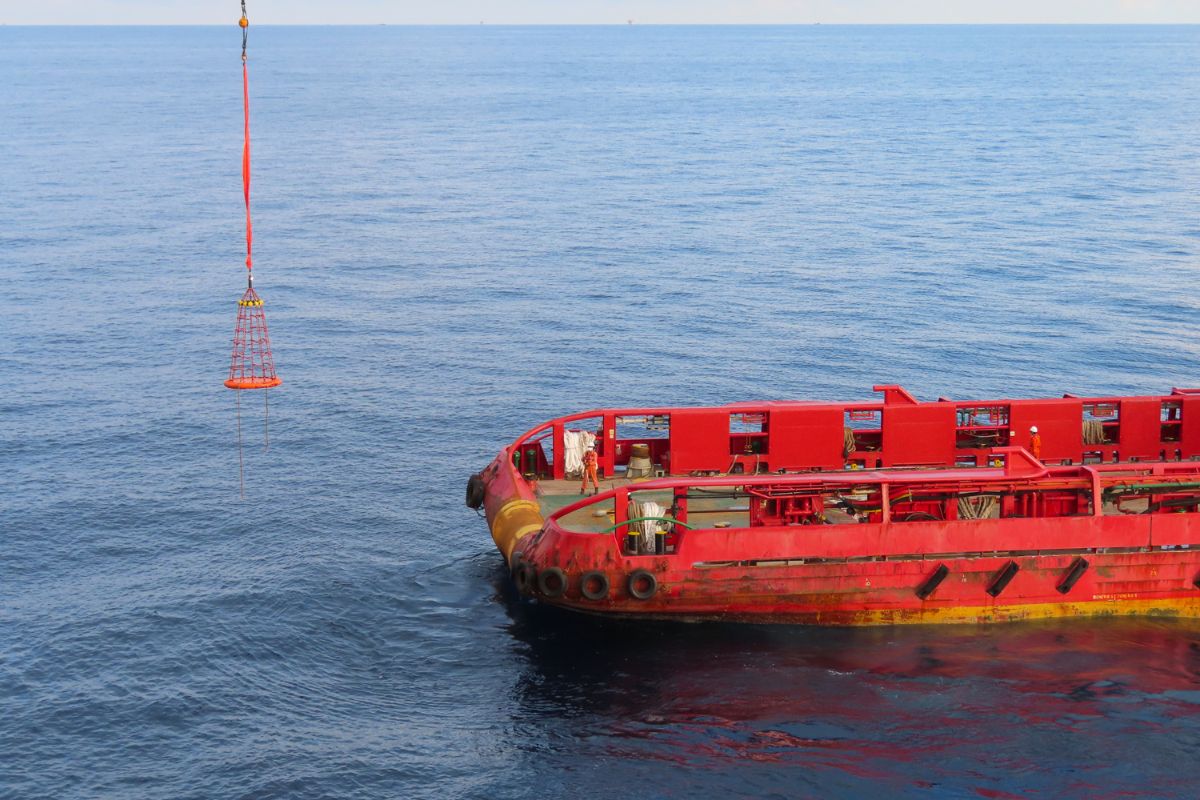How Do Offshore Basket Transfer Accidents Occur?
 Maritime workers on oil rigs, wind farms, and other offshore installations are exposed to a multitude of hazards. Fires, explosions, hypothermia, falling overboard, equipment mishaps, and electrocution are just a few of the accidents that can result in injury or even death for an offshore worker. Even getting to and from an offshore work site can be risky.
Maritime workers on oil rigs, wind farms, and other offshore installations are exposed to a multitude of hazards. Fires, explosions, hypothermia, falling overboard, equipment mishaps, and electrocution are just a few of the accidents that can result in injury or even death for an offshore worker. Even getting to and from an offshore work site can be risky.
One of the most common methods for transporting offshore workers between vessels and work sites aboard offshore structures involves the use of a personnel transfer basket, also known as a personnel transfer carrier or “Billy Pugh” transfer basket. Personnel transfer baskets are used in situations where direct access or docking isn’t an option. During the transfer process, a crane is used to lower the transfer basket onto the deck of a service vessel. The worker grabs onto the basket’s netting. The crane operator then lifts the basket off the vessel and transfers the worker to their destination.
While this method of transfer is quick and efficient, it places the worker at considerable risk of injury. Both maritime employers and employees are responsible for ensuring the safe transfer of workers and protecting them from foreseeable harm. When they fail to do so, offshore basket transfer accidents can occur.
Common Causes of Offshore Basket Transfer Accidents
The majority of offshore basket transfer accidents are the result of simple human error. In maritime operations, it only takes a moment of distraction or carelessness for disaster to strike.
Some of the common causes of negligent offshore basket transfer accidents include:
Lack of Proper Safety Equipment, Equipment Maintenance, and Safety Protocols
To prevent offshore basket transfer accidents, it’s important to regularly inspect and properly maintain all equipment involved in the transfer basket process. This includes life vests and other safety equipment. Comprehensive safety protocols need to be in place to reduce the possibility of transfer accidents.
Inadequate Employee Training
For safety protocols to be effective, all the workers involved in basket transfer operations should receive the necessary safety training to reduce the risks of accidents. The basket transfer process is a complex operation; insufficient safety training is a major cause of transfer basket injury accidents.
Negligent Crane Operation
Adequate safety training is especially important for the crane operators who perform personnel basket transfers. Beginning the transfer operation before a worker is ready, or raising or lowering a basket so quickly that it swings out of control can result in a worker falling out of a basket or being slammed into a floating or fixed structure. To prevent offshore basket transfer accidents, all crane operators involved in worker basket transfer need to possess the proper certification and safety training.
The Impact of External Factors on Safety
External factors like environmental conditions, equipment, and vessel design all have an impact on the safe transfer of offshore workers using personnel transfer baskets.
Adverse Weather and Other Environmental Conditions
While adverse weather can’t be avoided, offshore workers should understand the role high winds, high waves, heavy rain, and other weather events play in basket transfer safety. Factors such as wind speeds, sea state, and visibility are paramount. High winds and rough seas can make transfers unsafe.
Weather conditions must be assessed before the basket transfer process begins. Supervisors need to have the knowledge and tools to make informed choices about environmental factors and the risks they present.
Equipment and Vessel Design
The design of the personnel transfer basket is vital for ensuring the safety of transfer operations. This includes basket structure, attachment points, safety measures, weight capacity, and certifications that the baskets meet safety and industry standards. Weight should be distributed evenly to avoid imbalances that could cause the occupants to fall out of the basket.
The vessel’s deck layout must also be conducive to safe personnel transfers. The proper arrangement of equipment, clear communication lines, and designated transfer zones are essential components for the safe and efficient transfer of personnel.
Employer Responsibilities and Liability
Maritime employers have a legal obligation to maintain an offshore workplace in “seaworthy” condition. This means:
- An adequately staffed and trained crew.
- The proper maintenance and operation of equipment.
- The necessary safety protocols, equipment, and training to reduce the risk of an accident.
When employers fail to ensure the seaworthiness of a vessel or offshore structure and a worker suffers injury as a result, they can be held responsible for the damages caused by the worker’s injuries.
LKSA is Here to Protect Your Rights After a Maritime Basket Transfer Accident
If you were injured in a transfer basket accident, you may be able to recover compensation for the damages caused by your accident-related injuries. However, it’s important to act quickly to protect your rights. Strict deadlines and statutes of limitation apply in maritime injury cases.
The New Orleans-based maritime law firm of Lewis, Kullman, Sterbcow & Abramson, LLC is here to protect your rights. As one of the top maritime and admiralty law litigation firms in the country, our attorneys have played a crucial role in many of the most important maritime cases in the last 40 years.
Contact Lewis, Kullman, Sterbcow & Abramson, LLC today to speak to a Louisiana offshore accident attorney about your case. You can reach us using the online contact form on our website or call us at (800) 960-1526 to schedule a free initial consultation.